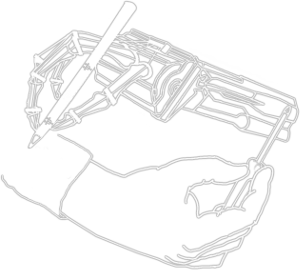Joint synergies are a crucial part of healthy movement in everyday tasks like grasping and walking, but after stroke they can become disrupted due to damage in the neural pathways that determine those synergies. Consequently, impairments such as pathological joint synergies often develop and can negatively impact quality of life for the patient, even after months of rehabilitation training. This is because current rehab approaches focus on maximizing functional ability and not reducing impairment. While functional ability is important for patient independence, lingering impairments can lead to lack of use of the impaired limb and feelings of isolation. To address these impairments, new approaches are being studied that involve 'quality movement' during training. Training with quality movement attempts to restore patients' movement patterns to what they were pre-stroke. In our approach, we have developed a controller for the Harmony exoskeleton that deters abnormal synergy patterns and rewards normative movement. The goal of this work is to determine the controller's impact on motor behavior and user effort, and thus its efficacy in promoting quality movement during rehabilitation training. Advances in impairment-reduction based approaches have the potential to improve functional ability while restoring normative movement patterns for stroke survivors.




